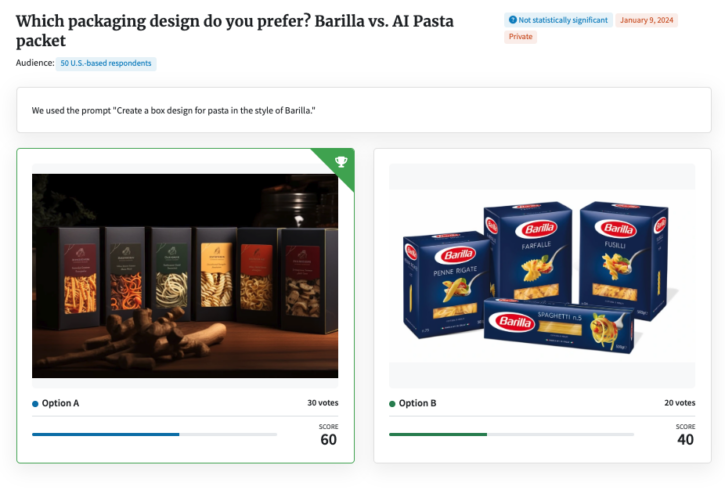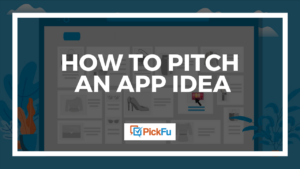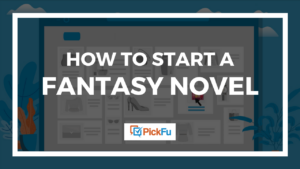Artificial intelligence (AI) image generation is a rapidly growing industry – and a game-changer for the retail packaging industry. Companies in a variety of sectors are turning to AI for quick and simple graphic design work, including packaging.
But can people tell the difference between AI-designed packages and human-created designs? Or does it even matter?
Design ideas often go through numerous iterations before the final version. Automation and AI tools can help businesses accelerate the design process while still allowing for the type of human input that drives great user experiences and results.
PickFu polls can help you determine if an AI-generated design is the right one for your product packaging.
But first, let’s do a crash course on how AI text-to-image art is created.
How does AI-generated design work?
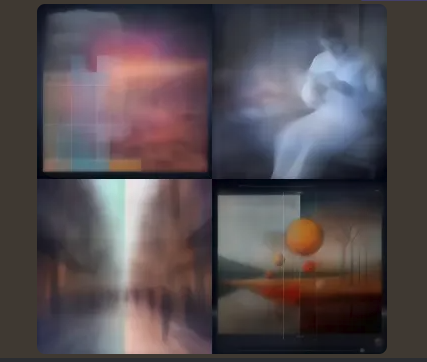
Most modern AI tools use diffusion to create images.
First, computer programs are “trained” using different images with word associations – for example, by showing cars tagged with the word “car” over and over again. Machine learning algorithms eventually allow the program to recognize a car.
Then, the process of diffusion breaks down these images until they’re a blur of random static. After doing this millions of times, you can ask the program to reverse the process and create new images. By changing up the background noise slightly and adjusting the keyword prompts, the AI tool is able to generate unique graphics.
So if you ask an AI art tool to produce a packaging design using a prompt like “design a gourmet pasta box with Italian themes” it will use the word associations it was trained on to generate the image for you.
The key to successful image generation is to use the right prompts and the right tools – but human judgment is also a key component.
What tools can you use for AI packaging design?
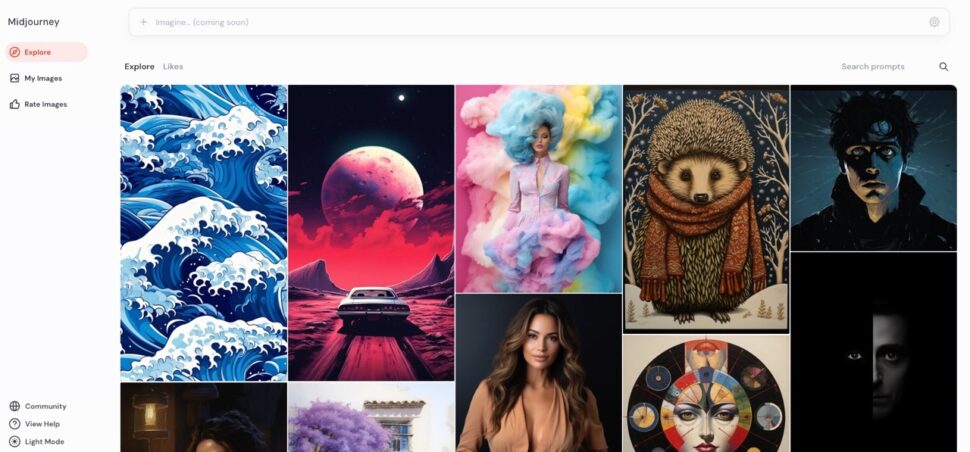
AI text-to-image tools include Midjourney, DALL-E3 (a stablemate to OpenAI’s ChatGPT), and Stable Diffusion. We’ll use Midjourney examples later on in this piece.
More experienced graphic designers can also use tools like Adobe Sensei. This AI technology is embedded in design software like Illustrator and Photoshop, so you can use it for design hints or inspiration even if you’re relying more on in-house, human-powered design.
Want to learn more about AI design tools? Check out our guides to popular image generation tools here:
Pros of using of AI for packaging design
The main advantage of AI is that it allows designers to rapidly create prototypes and iterate on their designs much faster than normal. AI has democratized and accelerated development for businesses of all industries and sizes.
There’s no question that AI saves money and time, especially during the product ideation and design process. It can also help provide inspiration and spark ideas for designs. However, there are some downsides.
Cons of using AI for packaging design
AI presents some ethical questions for companies. Since AI doesn’t actually come up with its own work, it’s scraping the work of other artists, designers, writers, and creators from across the web. AI has the potential to take jobs from experienced, qualified graphic designers and other creative professionals. And with few laws and regulations governing AI, it’s important to use these tools with care.
It can also be hard for AI to understand the balance between brand identity and the trends it was trained on. That nuanced relationship between design goals and brand image often requires human experience to get right.
There’s also the issue of unexpected errors. The prompts you give the tool will determine the outcome. For example, if you ask for a new packaging design for a luggage dolly but live in the U.K., you might find that dolls have been included in the AI’s set of trained-on images.
AI art can’t account for labeling requirements like food nutrition information or legal disclaimers, nor can it create barcodes and QR codes for you.
The simple truth is that packaging design will always require some level of human creativity and input.
Validating designs with human insights
Limitations in AI tools make it fairly easy at first glance to spot AI-generated art from human-created designs. The first is that AI tools usually can’t apply logos or text to the output, so if you’re looking to “fool” a focus group early in the design process, you’ll find it difficult.
However, AI can provide a set of ideas you can use to test the market and see what imagery appeals to your target audience the most.
We generated some prototype designs for common packaging like pasta, beverages, and shampoo. Then we took those designs to PickFu’s verified panel of survey respondents for their thoughts.
This exercise is a good example of how a blend of rapid design and rapid customer research can help you accelerate your packaging design and get the results you need faster, using a mix of human and AI creative.
Human vs AI packaging: which do audiences prefer?
Over the course of three different Head-to-Head polls, users selected human-generated packages twice, a 66% success rate for the original designs.
Some of the deciding factors were more modern or vibrant imagery and colors, but user experience played a role too.
All three polls used PickFu’s natural language processing (NLP) tool to generate an AI summary of the comments respondents left. This gives designers and marketers who are researching packaging designs fast, actionable feedback on the design direction that will be most effective.
In this Pantene option, users said they preferred the usability of the existing shampoo bottle to the computer-generated redesign. Intriguingly, users found the original design more trustworthy than the AI interpretation.
In the one case where the AI design was the winning option, the AI summary highlighted:
“The characteristics that set Option A apart from Option B (Barilla) were its dark and elegant colors, which gave it a premium and upscale appearance. Respondents found Option A to be more visually appealing and associated it with higher quality and authenticity. The larger window on the AI Pasta packet also allowed for a better view of the pasta inside, further enhancing its appeal.”
It went on to highlight things the losing option did well: “Loyalty towards Barilla due to past positive experiences or childhood associations.”
These sorts of insights might help a brand push into a new design direction while also helping it retain its key image and brand identity. A next step might be to incorporate the Barilla logo into a package with a larger window and a different base color palette.
Lastly, the beverage container poll demonstrated that consumers value differentiation between flavors and simplicity over style. They selected the original packaging for this reason.
Audience feedback via PickFu can help guide the packaging design and iteration process by providing high-quality directional feedback. Curiously, AI might also help designers break into emerging trends early on.
When we used a Ranked poll to find out which designs respondents liked best from a purely aesthetic point of view the AI-generated pasta and Pantene bottles scored extremely highly. The poll summary noted:
“Across all options, three key topics emerged as important factors in participants’ decision-making process: color palette, visual flair/detailing, and simplicity. Respondents consistently mentioned their preference for strong base colors that catch attention or resonate emotionally.”
Marketers, product planners, and packaging designers who are hoping to reinvigorate an existing product, or who want to launch something new can use the advancements in automated design to create rapid prototypes for testing.
This step-by-step process can create stunning packaging designs that have a big impact on sales. In this real-world example, Angry Orange used design upgrades verified by PickFu to triple their sales on the Amazon marketplace.
Blending human creativity & experience with the power of AI
The best use of AI when designing product packaging is to help spark ideas from the start, and then quickly iterate on designs throughout the process.
Successful graphic designers and product developers can then combine the AI-generated inspiration with their own expertise and creativity to create the final product.
And along the way, make sure you get feedback on AI-generated (and human) designs from your target audience with the help of PickFu! Try our packaging evaluation poll template to get started quickly and easily.
AI packaging design FAQS
Is there an AI tool for product design?
There are many design tools powered by AI on the market. These range from dedicated product design tools and embedded AI features in design software like Adobe’s Sensei, to accessible AI text-to-image programs like Midjourney. AI can help create design concepts that companies develop further through iterative design.
What is the role of AI in packaging?
AI is useful for everything from generating new packaging mockups to fine-tuning different design elements. It’s also helpful for analyzing the results of market research and making it easier and faster to iterate and test new ideas. In some places, including the food and pharmaceutical industries, AI is even used for AI-assisted label creation for label designs like supplements, food and even wine bottles. It fills in key data on labels automatically using data provided by producers.
